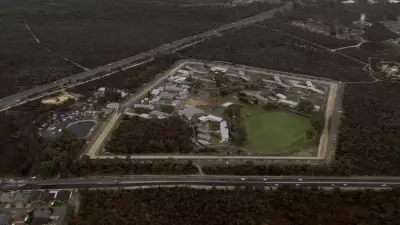
The dusty, emerging capital city of Canberra in the late 1920s became an unlikely training ground for one of Australia's most transformative prime ministers, Gough Whitlam, whose regional upbringing would fundamentally shape his ambitious political vision for the nation.
From reluctant beginnings to political awakening
When eleven-year-old Gough Whitlam arrived in Canberra in February 1928 with his mother Martha and sister Freda, the experience was far from welcoming. His mother cried throughout the entire train journey from Sydney, distressed at leaving behind the comforts of Australia's established capital.
Canberra in 1928 was little more than a schematic vision taking shape on the Limestone Plains - a collection of scattered houses, a provisional Parliament House, and dusty roads separating communities divided by social class and pay scales. Public servants had been transferring reluctantly to the new capital since 1927, arriving in what journalist Warren Denning described as "a steady but querulous, impatient and thoroughly dissatisfied stream."
Unlike most newcomers, Fred Whitlam - Gough's father and assistant crown solicitor - embraced the challenge of building a national capital from the ground up. The Whitlam family would establish three homes in Canberra's inner south, all noted for their well-stocked libraries and the hospitality of Martha alongside Fred's scholarly courtesy.
Canberra as a living laboratory
Historian and Whitlam biographer Jenny Hocking identifies Canberra as "a childhood case study in the possibilities of government" for the future prime minister. The city demonstrated what could be achieved through federal power, centralized planning, and deliberate urban development.
Whitlam himself acknowledged this influence, stating: "The years I spent growing up in this city did something to strengthen my convictions about the role of national government in the nation's affairs."
Living in an open, gregarious household where senior public servants and visiting dignitaries regularly joined dinner conversations, young Gough was exposed to sophisticated political discussions that most children would never encounter. He attended Telopea Park School for four years before becoming dux of Canberra Grammar for three consecutive years.
According to Troy Bramston's recent biography "Gough Whitlam: The Vista of the New," Canberra impressed upon Whitlam the essential need for proactive urban development to provide services and conveniences for growing populations - from schools and hospitals to roads, transport, and recreational facilities like the Manuka Pool that opened in 1931.
From Canberra childhood to national vision
After university and Royal Australian Air Force service during World War II, Whitlam settled with his wife Margaret in Cronulla, where the contrast with planned Canberra was stark: no sewers, no high school, and unsealed roads. This experience of inadequate urban infrastructure would later inform his political priorities.
When Whitlam announced his government's ambitious program in his 1972 policy speech at Blacktown - deliberately chosen to highlight urban policy failures - he outlined three great aims: promoting equality, involving Australians in decision-making, and liberating the talents of the people.
The Whitlam government's achievements were monumental and enduring: establishing Medibank (the precursor to Medicare), introducing no-fault divorce, implementing free university education that increased participation by 25 percent, providing ACT and NT Senate representation, reducing the voting age to 18, abolishing conscription, and launching a national sewerage program that connected tens of thousands of homes.
In the government's first fourteen days alone, Whitlam and his deputy Lance Barnard made approximately forty major decisions as the only two ministers, demonstrating the breakneck pace of reform that characterized the administration.
The Dismissal and lasting legacy
Fifty years after the dramatic events of Remembrance Day 1975, when Governor-General Sir John Kerr dismissed Whitlam's government in one of the most controversial acts in Australian political history, analysts continue to examine how Whitlam's Canberra upbringing influenced his approach to the crisis.
Bramston suggests that Whitlam's "fatal miscalculation" was his failure to consult colleagues and heed advice during the constitutional crisis. Having grown up surrounded by public servants of unwavering propriety, Whitlam maintained faith that institutions and office-holders would act according to precedent and expectation.
Hocking notes that "Whitlam did have faith in the institutions. He always said himself that his great belief was in the key institutions of governance." The events of 1975 tested that belief severely, though Hocking clarifies that "it wasn't the institutions that let him down. It was the people in them."
Bramston reflects that the Dismissal represented "a monumental train wreck for our parliamentary democracy and our institutions," with consequences that have shaped Australian politics ever since. The public reaction has been so powerful that no subsequent governor-general has repeated Kerr's actions, and no opposition has again denied supply to a government.
Whitlam's childhood experience of watching Canberra transform from schematic plans to functional capital within years instilled in him a profound belief in what coordinated national effort could achieve. This conviction drove his ambitious vision for federal involvement in urban development, education, healthcare, and infrastructure - a legacy that continues to influence Australian political discourse today.





